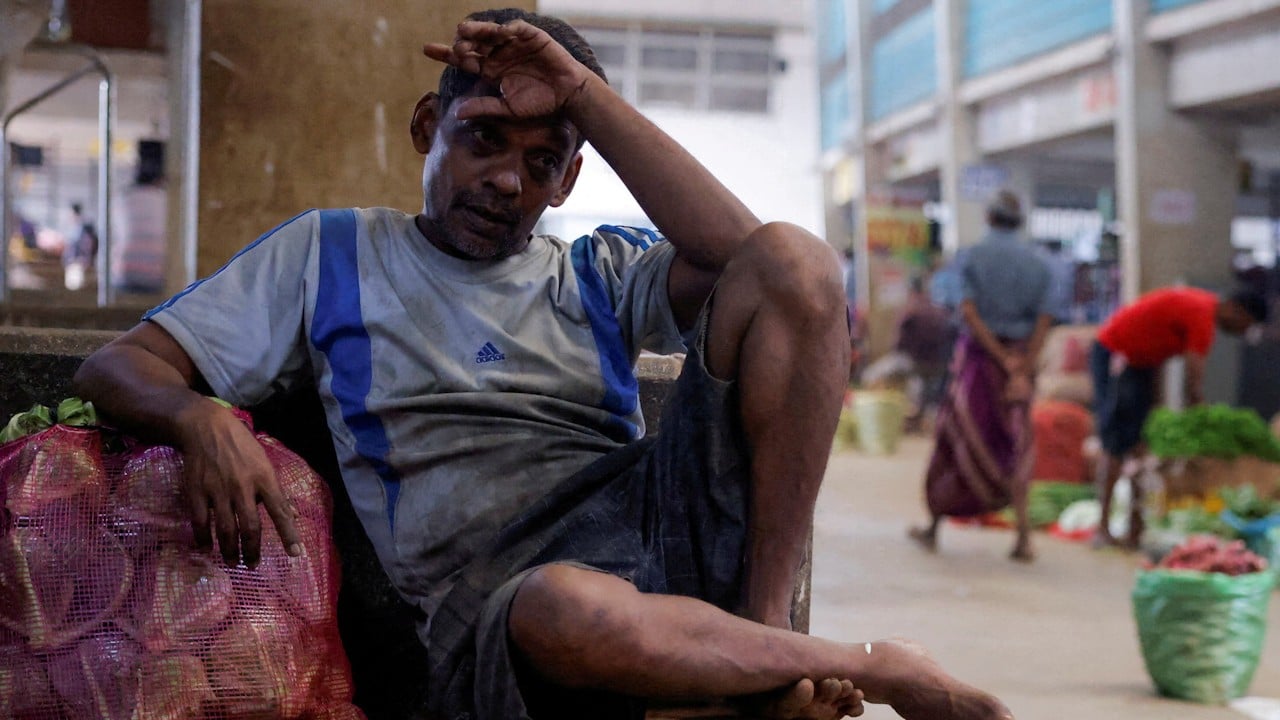
Bankers make little progress on global debt crisis as currency risks loom
- The World Bank and IMF have taken baby steps, including setting up a sovereign debt roundtable, but the plodding approach is likely to be overtaken by emergency action
- This is especially as currency risks have yet to be addressed in debt restructuring plans
The numerous reports, agreements and comments sounded alarms for urgent action to ease the dire struggles of low-income countries, but were short on breakthroughs. Support was mustered for interest rate increases while euphemisms were reiterated that made palatable the painful government actions once ominously called – but now taboo – austerity measures.
On the plus side, an agreement is reportedly near for China to abandon its long-standing demand that multilateral development banks take the same losses on their sovereign loans as other creditors. In exchange, the World Bank and International Monetary Fund would commit to low-cost financing, including grants, for countries restructuring their debts.
The World Bank and IMF, backed by the United States and others, viewed such “haircut” losses on their loans – already provided on more favourable terms than those of private banks – as bailouts to creditors.
With that logjam cleared, immediate rescues are more likely. Last week, about 30 private creditors sent Sri Lanka’s government a proposal to restructure its debt after Japan, India and France announced a similar initiative. But whether Sri Lanka’s largest bilateral creditor, China, would join such talks was up in the air. Zambia could see a rescue soon, too.
In another move forward, the Global Sovereign Debt Roundtable held its first meeting. Participants agreed to increase information-sharing on macroeconomic projections and debt sustainability assessments. They also endorsed a case-by-case approach for restructuring sovereign debts.
Aside from these baby steps, the IMF head, Kristalina Georgieva, could only offer a vague sense of progress at the Global Sovereign Debt Roundtable, concluding that there was a need to “identify principles for how timelines have been set”, after noting there is no consensus yet on a key sticking point: “compatibility of treatment”, the principle that all creditors get roughly the same deal at the same time.
Establishing this approach would address a common source of impasse in debt talks – that no creditor wants to be the first to make a deal and risk agreeing to less onerous terms than the banks that follow. So a waiting game ensues.
In 2021, developing countries spent US$400 billion servicing their debts, more than twice what they received in development aid. These costs typically exceed expenditures on health, education and social protection combined, constituting on average 16 per cent of government revenue, according to Debt Justice. The longer the wait for debt resolutions, the more dire the human suffering.

China’s government is borrowing at the fastest pace on record, increasing tenfold over the past decade, according to Goldman Sachs. The IMF estimates that China’s total debt has exceeded the value of its economy – at 284 per cent of GDP last year.
China’s debt-service payments have tripled since 2015. Government debt is the largest portion of China’s total debt, according to the IMF.
Global mountain of debt should give stock market investors pause
If the IMF’s long-term forecasts hold true, debt repayments will become increasingly difficult for countries. Over the past 15 years, the IMF has steadily revised downwards its five-year-ahead projections for sustainable growth, from nearly 5 per cent yearly to only 3 per cent in its April forecast.
As economies mature, their populations age, and safety nets are widened, growth rates typically slow, the post-Covid boom being an aberration.
If the global economy flounders, governments will tighten their belts further. The IMF positions “fiscal consolidation”, its euphemism for reining in government spending and raising taxes, as central in “durably reducing debt ratios”. But the effectiveness of “fiscal adjustments” is greatest “during good times” and “when accompanied by growth-enhancing structural reforms and strong institutional frameworks”.

Does that mean governments should cut spending but borrow to invest in growth? Leaders will be pressed for stimulus if their economies contract, as we saw in the Covid-19 era. That will drive more borrowing. This quandary is another obstacle to debt mitigation.
Currency risks remain another enormous obstacle. Unless these are mitigated when debts are restructured, borrowing costs could escalate when the local currency loses value against the dollar. Unctad claims the foreign-currency share of low-income countries’ debt is around 70-85 per cent.
“Currency risk is the most unpredictable and largest driver of upwards debt dynamics, but has not been identified by the World Bank/IMF as a problem worth solving,” contends Ruurd Brouwer, the chief executive of currency hedge fund TCX. Currency swaps, first used by the World Bank in 1981, should be better integrated into solutions.
James David Spellman, a graduate of Oxford University, is principal of Strategic Communications LLC, a consulting firm based in Washington, DC


